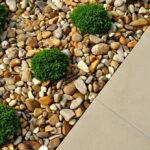Is Chalk Sedimentary Rock? Yes, chalk is a soft, white sedimentary rock primarily composed of the mineral calcite, a form of calcium carbonate, and this article from rockscapes.net will explore the fascinating world of chalk, detailing its formation, composition, characteristics, distribution, and diverse applications. Understanding chalk provides insights into geological processes and highlights its significance in various fields, and you’ll discover how this remarkable rock has been utilized throughout history and continues to play a role in modern applications, including landscape design and soil improvement, plus discover valuable insights into landscape materials, decorative rocks, and construction guides.
1. What Is Chalk and Is It Sedimentary Rock?
Yes, chalk is indeed a sedimentary rock, formed from the accumulation of microscopic marine organisms. Let’s explore what defines chalk and why it’s classified as sedimentary. Chalk is a type of limestone known for its soft, white, and porous characteristics, primarily composed of the mineral calcite (calcium carbonate) and has a fine-grained texture and is relatively soft, making it easy to crumble.
1.1 The Sedimentary Nature of Chalk
Chalk is classified as a sedimentary rock because of its formation process. According to research from Arizona State University’s School of Earth and Space Exploration, sedimentary rocks are formed from the accumulation and cementation of sediments, which can include mineral grains, organic matter, and chemical precipitates.
Chalk’s formation process aligns with this definition because it originates from the accumulation of the remains of tiny marine organisms. Over millions of years, these remains accumulate on the ocean floor, and the weight of overlying sediments compacts them. The calcium carbonate in the remains then crystallizes, binding the particles together and forming chalk.
1.2 Formation of Chalk
- Marine origin: Chalk rock is primarily associated with marine environments. It forms in areas where there is an abundance of microscopic marine organisms, particularly coccolithophores.
- Accumulation of Microscopic Organisms: The key process behind chalk rock formation involves the gradual accumulation of the remains of coccolithophores. These are tiny, single-celled algae that secrete calcium carbonate plates, known as coccoliths, around their cell membranes. These coccoliths are extremely small, usually less than 1/100th of a millimeter in size.
- Sedimentation: As these coccolithophores live and die, their coccoliths sink to the ocean floor. Over time, these accumulated remains build up in thick layers.
- Compaction and Cementation: As more and more layers of coccolith-rich sediments accumulate, they undergo compaction due to the weight of overlying sediments. Additionally, the calcium carbonate in the coccoliths can dissolve and recrystallize, acting as a natural cement that binds the sediments together.
- Lithification: The compaction and cementation processes eventually lead to the lithification of these sediments, turning them into solid rock. This is how chalk rock is formed.
1.3 Composition of Chalk Rock
Chalk rock is primarily composed of calcium carbonate (CaCO3), in the form of calcite. The primary components of chalk rock include:
- Coccoliths: Chalk rock is made up predominantly of the microscopic calcium carbonate plates, or coccoliths, of coccolithophores. These tiny structures are what give chalk its characteristic white color and fine-grained texture.
- Calcite Matrix: In addition to the coccoliths, chalk rock often contains a calcite matrix that binds the coccoliths together. This matrix forms as the calcium carbonate from the coccoliths dissolves and recrystallizes between the coccoliths, creating a cohesive rock.
- Minor Impurities: Chalk may contain minor impurities, such as clay minerals, silica, and organic matter, but these are typically present in small quantities compared to the dominant calcite content.
The high calcium carbonate content and fine-grained texture of chalk make it soft and relatively porous compared to many other types of sedimentary rocks. It is also characterized by its white or light gray color, and its soft nature allows it to be easily scratched or crumbled into a powder, making it distinct from other types of limestone and sedimentary rocks.
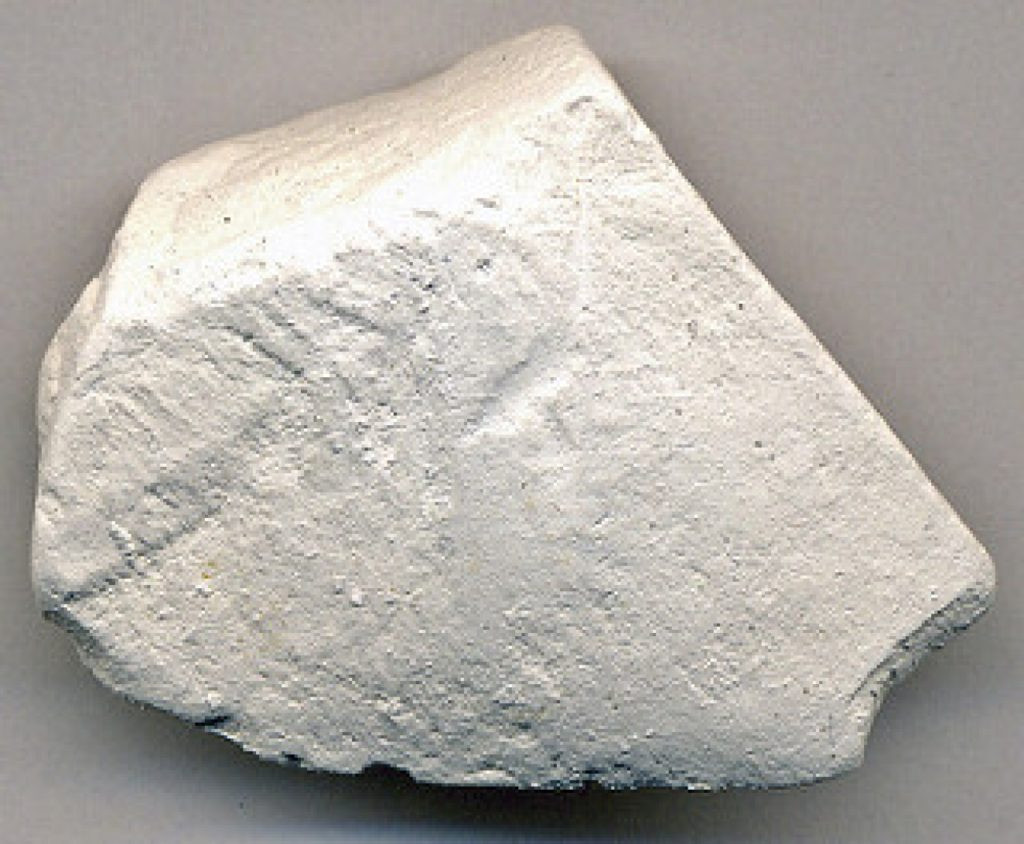 Coccolithophore Under Microscope
Coccolithophore Under Microscope
2. What Are the Key Characteristics and Properties of Chalk?
What makes chalk unique? Its defining features include its color, texture, composition, porosity, and friability. These characteristics contribute to its varied uses and significance.
2.1 Distinctive White Color
Chalk is renowned for its brilliant white or pale gray color and this distinctive hue results from its high calcium carbonate content and minimal impurities, making it easily recognizable.
2.2 Fine-Grained Texture
The texture of chalk is exceptionally fine-grained, rendering it smooth to the touch. This powdery texture allows it to be easily crumbled, setting it apart from other rock types.
2.3 Composition and Porosity
Composed mainly of calcium carbonate (CaCO3), chalk has a porous structure and this porosity means it contains numerous small pores and voids, influencing its ability to absorb water.
2.4 Softness and Friability
Chalk is a soft rock that is easily broken or crumbled because its friable nature makes it less durable than harder rocks, meaning it can be easily scratched with a fingernail.
2.5 Chemical Reactivity
Due to its high calcium carbonate content, chalk is chemically reactive and it effervesces (fizzes) when exposed to acids, a property often used to distinguish it from other rocks.
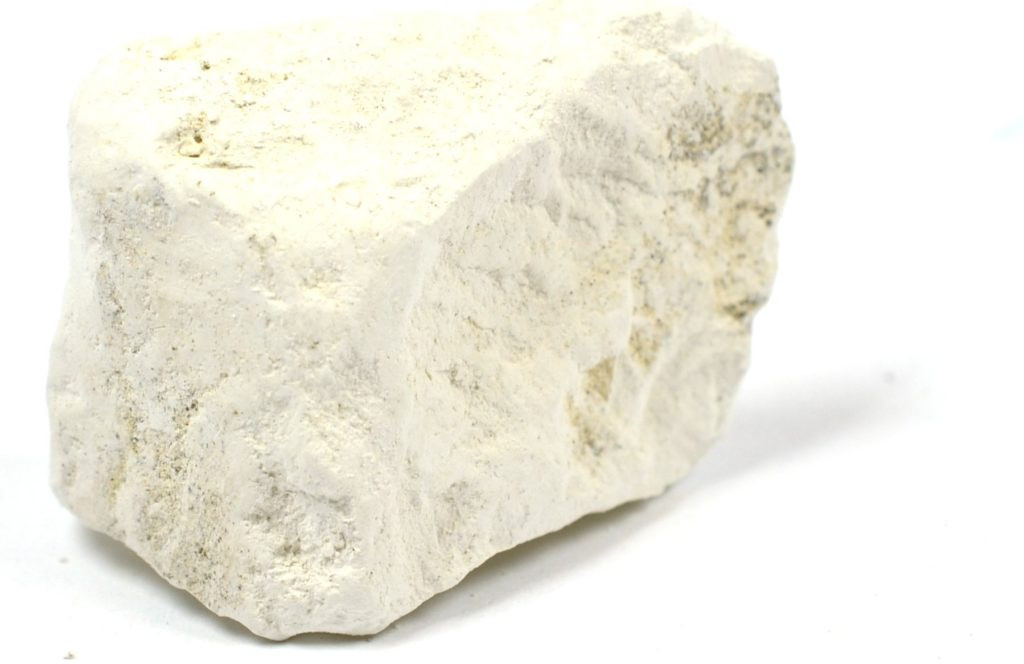 White Cliffs of Dover Chalk
White Cliffs of Dover Chalk
3. What Is the Geological Significance of Chalk Formations?
Chalk formations provide valuable insights into Earth’s past, preserving records of ancient marine environments and climate conditions. Studying these formations helps scientists understand the evolution of marine life and the geological processes that shaped our planet.
3.1 Insights into Past Marine Environments
Chalk formations are like time capsules, preserving detailed records of ancient marine environments. According to a study published in the “Journal of Sedimentary Research,” the composition and structure of chalk can reveal information about the temperature, salinity, and nutrient levels of the oceans in which it formed.
3.2 Fossil Content
Chalk deposits often contain a rich fossil record of microscopic marine organisms, particularly coccolithophores. As stated in “Palaeontology,” these fossils provide valuable insights into the evolution and diversity of marine life over millions of years.
3.3 Stratigraphic Markers
Chalk layers can serve as stratigraphic markers, helping geologists correlate rock layers across different regions. According to the “Geological Society of America Bulletin,” the distinct properties and widespread distribution of chalk make it a useful tool for understanding regional geology.
3.4 Understanding Climate Change
The study of chalk formations can also provide insights into past climate change. Research published in “Nature” indicates that variations in the isotopic composition of chalk can reflect changes in ocean temperature and atmospheric CO2 levels, offering clues about Earth’s climate history.
3.5 Coastal Landforms
Chalk cliffs, such as the White Cliffs of Dover, are iconic coastal landforms that result from the erosion of chalk formations. These cliffs play a role in coastal erosion and provide unique habitats for marine life.
4. Where Can Chalk Deposits Be Found Globally?
Chalk deposits are found on every continent, with significant occurrences in Europe, North America, Australia, and Africa. These deposits provide valuable resources and insights into the geological history of different regions.
4.1 Europe
Europe is famously associated with chalk formations, particularly the White Cliffs of Dover in England and chalk deposits in France, Denmark, and the Netherlands. These deposits date back to the Cretaceous period and are composed of the remains of coccolithophores.
4.2 North America
In North America, chalk deposits are found in the central and southern United States, including Texas, Kansas, and Nebraska. These deposits were formed during the Cretaceous period when much of the region was covered by shallow seas.
4.3 Australia
Australia has chalk deposits in South Australia and Western Australia and these deposits are associated with the Great Artesian Basin, a vast underground water reservoir.
4.4 Africa
Chalk deposits can be found in North Africa, including Morocco and Egypt. These deposits were formed during the Cretaceous period and are associated with ancient marine environments.
4.5 Other Regions
Chalk deposits can also be found in smaller quantities in other regions around the world, including South America and Asia. These deposits provide valuable insights into the geological history of these regions.
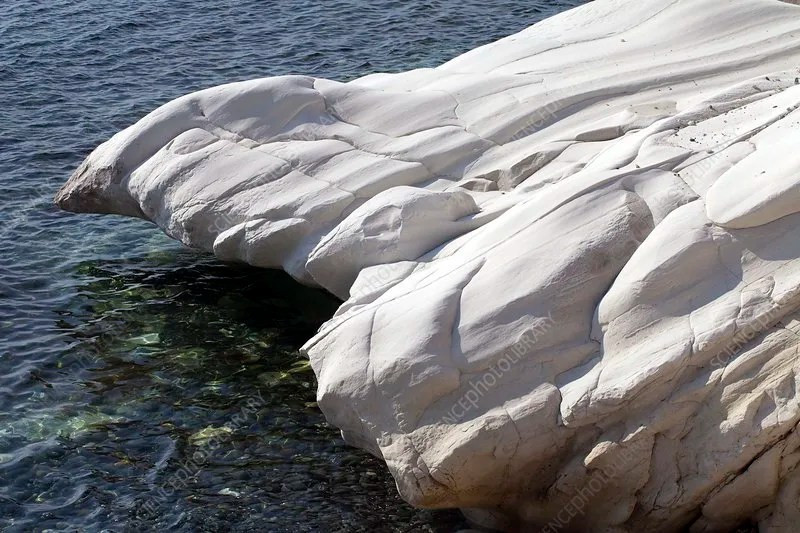 Chalk Cliffs at Coast
Chalk Cliffs at Coast
5. How Is Chalk Used in Agriculture?
In agriculture, chalk is used to improve soil acidity, structure, and fertility. When ground into a fine powder, it’s added to soil to reduce acidity, increase pH levels, and provide essential calcium for plant growth.
5.1 Soil Amendment
Chalk is often used as a soil amendment to improve soil acidity. Acidic soils can hinder plant growth by limiting the availability of essential nutrients. Chalk’s high calcium carbonate content helps neutralize acidity, raising the pH level to a more optimal range for many plants.
5.2 Soil Structure Improvement
In addition to neutralizing acidity, chalk can also improve soil structure. It helps break up compacted soils, improving drainage and aeration and this is particularly beneficial in clay soils, where compaction can be a significant problem.
5.3 Calcium Source
Calcium is an essential nutrient for plant growth, playing a vital role in cell wall development, nutrient uptake, and enzyme activation. Chalk provides a readily available source of calcium for plants, promoting healthy growth and development.
5.4 Nutrient Availability
By improving soil pH and structure, chalk can also enhance the availability of other essential nutrients. When soil pH is within the optimal range, plants can more easily absorb nutrients such as phosphorus, potassium, and micronutrients.
5.5 Crop Yields
Studies have shown that using chalk as a soil amendment can increase crop yields. A study published in the “Agronomy Journal” found that applying chalk to acidic soils increased soybean yields by up to 20%.
6. What Role Does Chalk Play in the Construction Industry?
In the construction industry, chalk has been used as a building material, particularly in regions where it’s abundant and while it’s not as common as other materials, it has specific applications due to its unique properties.
6.1 Historical Building Material
Chalk has been used as a building material for centuries, particularly in regions where it is abundant and easily accessible. Its softness and ease of cutting made it a popular choice for constructing walls, foundations, and other structural elements.
6.2 Mortar and Plaster
Chalk can also be used in the production of mortar and plaster. When mixed with water and other ingredients, it creates a workable paste that can be used to bind bricks or stones together or to create smooth wall surfaces.
6.3 Fill Material
Chalk can be used as a fill material in construction projects. Its lightweight and porous nature make it suitable for filling voids, leveling surfaces, and providing insulation and it’s often used in road construction to provide a stable base for paving.
6.4 Cement Production
Chalk is a key ingredient in the production of cement. It provides the calcium oxide needed to create cement clinker, which is then ground into a fine powder to produce cement.
6.5 Modern Applications
While chalk is not as widely used in construction as it once was, it still has some modern applications. It can be used in the production of lightweight concrete blocks, as a component in specialized plasters, and as a soil stabilizer in certain construction projects.
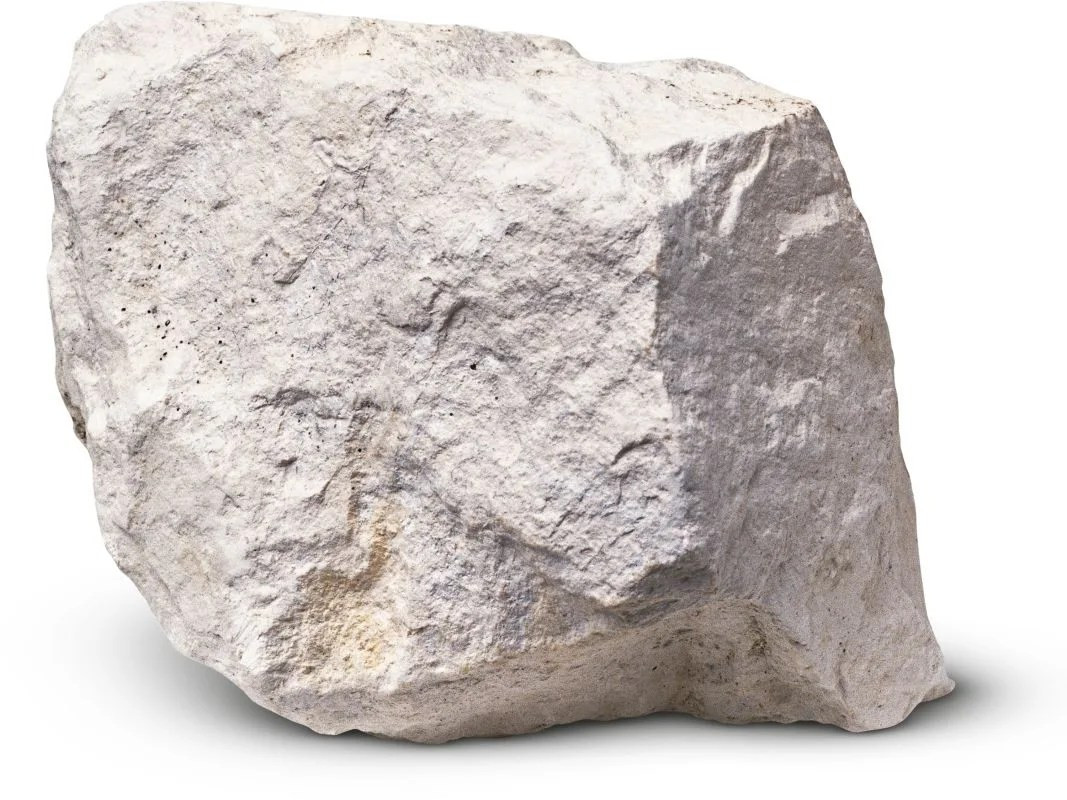 chalk is useful in construction
chalk is useful in construction
7. How Is Chalk Utilized in Art and Education?
Chalk is used in art as a medium for drawing and sketching, offering a unique texture and blending capabilities and in education, it has a long history as a writing tool on chalkboards, facilitating learning and instruction.
7.1 Art Medium
Chalk is a versatile medium in art, offering a unique texture and blending capabilities. Chalk pastels, made from compressed chalk, are used to create colorful and textured artworks.
7.2 Drawing and Sketching
Artists use chalk for drawing and sketching because it can create soft, subtle lines or bold, expressive strokes. It’s easy to blend and layer, allowing for a wide range of effects.
7.3 Educational Tool
Chalk has been used as a writing tool on chalkboards for centuries. Teachers use chalk to write and draw, providing a visible and erasable medium for instruction.
7.4 Visual Aids
Chalk is often used to create visual aids in classrooms, such as diagrams, charts, and illustrations. It’s easy to erase and modify, making it ideal for interactive lessons.
7.5 Student Participation
Chalk allows students to actively participate in lessons by writing on the board, solving problems, or creating their own visual aids and this hands-on approach enhances learning and engagement.
8. What Are the Industrial Applications of Chalk?
Chalk finds diverse applications in various industries, including its use as a filler in rubber and plastics, a pigment in paints and coatings, and a component in the production of toothpaste and cosmetics.
8.1 Filler Material
Chalk is used as a filler material in various industrial applications, including rubber, plastics, and paper. It improves the texture, opacity, and printability of paper.
8.2 Pigment
Chalk is also used as a pigment in paints and coatings. It provides whiteness, brightness, and opacity. It’s often used in whitewash, distemper, and other types of decorative coatings.
8.3 Toothpaste and Cosmetics
Chalk is a common ingredient in toothpaste and cosmetics. It acts as a mild abrasive, helping to remove plaque and stains from teeth and it adds bulk and opacity to cosmetics.
8.4 Rubber Production
Chalk is used in rubber production to improve the strength, elasticity, and durability of rubber products. It also acts as a processing aid, making it easier to mold and shape rubber.
8.5 Plastic Production
Chalk is used in plastic production to improve the strength, stiffness, and heat resistance of plastic products and it reduces the cost of plastic by replacing more expensive resins.
9. How Does Chalk Contribute to Coastal Landforms?
Chalk formations play a significant role in shaping coastal landscapes, creating iconic features such as the White Cliffs of Dover. These cliffs are formed by the erosion of chalk formations, resulting in striking visual appeal.
9.1 Formation of Cliffs
Chalk formations often form cliffs along coastlines. The White Cliffs of Dover in England are a prime example of this. These cliffs are formed by the erosion of chalk formations by the sea, resulting in steep, dramatic landforms.
9.2 Erosion Processes
Chalk cliffs are subject to various erosion processes, including wave action, weathering, and landslides. These processes gradually wear away the chalk, creating distinctive features such as arches, stacks, and caves.
9.3 Coastal Habitats
Chalk cliffs provide unique habitats for various marine and terrestrial organisms. Seabirds nest on the cliffs, while marine invertebrates thrive in the intertidal zone.
9.4 Tourism and Recreation
Chalk cliffs are popular tourist destinations, attracting visitors from around the world and these areas offer opportunities for hiking, birdwatching, and other recreational activities.
9.5 Coastal Protection
Chalk cliffs can also provide a degree of coastal protection, acting as natural barriers against erosion and storm surges. However, they are also vulnerable to erosion, and coastal management strategies are needed to protect them.
 Chalk cliffs at coast in England
Chalk cliffs at coast in England
10. What Are Some Interesting Facts About Chalk?
Chalk has a rich history and unique properties that make it a fascinating rock and here are some intriguing facts:
10.1 Microscopic Origins
Chalk is made up of the remains of microscopic marine organisms called coccolithophores. These tiny organisms lived millions of years ago, and their calcium carbonate shells accumulated on the ocean floor to form chalk deposits.
10.2 Famous Cliffs
The White Cliffs of Dover in England are one of the most famous chalk formations in the world. These cliffs are composed of pure white chalk and have been a landmark for centuries.
10.3 Writing Tool
Chalk has been used as a writing tool for centuries. Before the advent of modern writing implements, chalk was used on blackboards in classrooms and for writing on walls and other surfaces.
10.4 Soil Amendment
Chalk is used as a soil amendment in agriculture. It helps to neutralize acidic soils and provide essential calcium for plant growth.
10.5 Industrial Uses
Chalk has various industrial uses, including as a filler in rubber and plastics, a pigment in paints and coatings, and a component in toothpaste and cosmetics.
10.6 Geological Significance
Chalk formations provide valuable insights into Earth’s geological history, preserving records of ancient marine environments and climate conditions.
10.7 Softness
Chalk is a relatively soft rock that can be easily scratched with a fingernail. This softness makes it suitable for various applications, including writing and drawing.
10.8 Porosity
Chalk is a porous rock, meaning it contains numerous small pores and voids. This porosity allows it to absorb water and other liquids.
10.9 Chemical Reactivity
Chalk is chemically reactive and effervesces (fizzes) when it comes into contact with acids. This property is often used to identify and distinguish chalk from other rocks.
10.10 Cultural Significance
Chalk has cultural significance in various regions, often associated with traditional crafts, artwork, and historical writing instruments.
FAQ: Is Chalk Sedimentary Rock?
1. Is chalk a rock or a mineral?
Chalk is a rock, specifically a sedimentary rock. It is composed primarily of the mineral calcite (calcium carbonate).
2. What type of rock is chalk classified as?
Chalk is classified as a sedimentary rock because it is formed from the accumulation and cementation of sediments, primarily the remains of microscopic marine organisms.
3. How is chalk formed?
Chalk is formed from the accumulation of the remains of microscopic marine organisms, primarily coccolithophores. Their calcium carbonate shells accumulate on the ocean floor, and over time, compaction and cementation transform these sediments into solid rock.
4. What are the main components of chalk?
The main component of chalk is calcium carbonate (CaCO3), primarily as the mineral calcite. It may also contain minor impurities such as clay minerals, silica, and organic matter.
5. What are the key characteristics of chalk?
Chalk is known for its white or pale gray color, fine-grained texture, softness, porosity, and chemical reactivity (effervescence with acids).
6. Where can chalk deposits be found?
Chalk deposits can be found on every continent, with notable occurrences in Europe (e.g., White Cliffs of Dover), North America (e.g., Texas, Kansas, Nebraska), Australia, and Africa.
7. What are some common uses of chalk?
Chalk has various uses, including writing and drawing, education, agriculture (soil amendment), construction (historical building material), and industry (filler, pigment).
8. How does chalk contribute to soil improvement?
Chalk is used as a soil amendment to neutralize acidity, improve soil structure, and provide essential calcium for plant growth.
9. What is the geological significance of chalk formations?
Chalk formations provide valuable insights into Earth’s geological history, preserving records of ancient marine environments, climate conditions, and the evolution of marine life.
10. Are chalk cliffs stable?
Chalk cliffs are subject to erosion and can be unstable. Coastal management strategies are needed to protect these iconic landforms and ensure public safety.
At rockscapes.net, we provide detailed information about various rock types and their uses in landscaping and construction. We also offer design ideas and expert advice to help you create stunning outdoor spaces. Whether you are looking for inspiration or practical guidance, rockscapes.net is your go-to resource for all things related to rocks and landscapes.
Ready to explore the beauty and versatility of rocks in your landscape? Contact us today to discover how we can help you transform your outdoor space with natural stone:
Address: 1151 S Forest Ave, Tempe, AZ 85281, United States
Phone: +1 (480) 965-9011
Website: rockscapes.net
Visit rockscapes.net now for inspiration, information, and expert advice on creating stunning landscapes with rocks.

